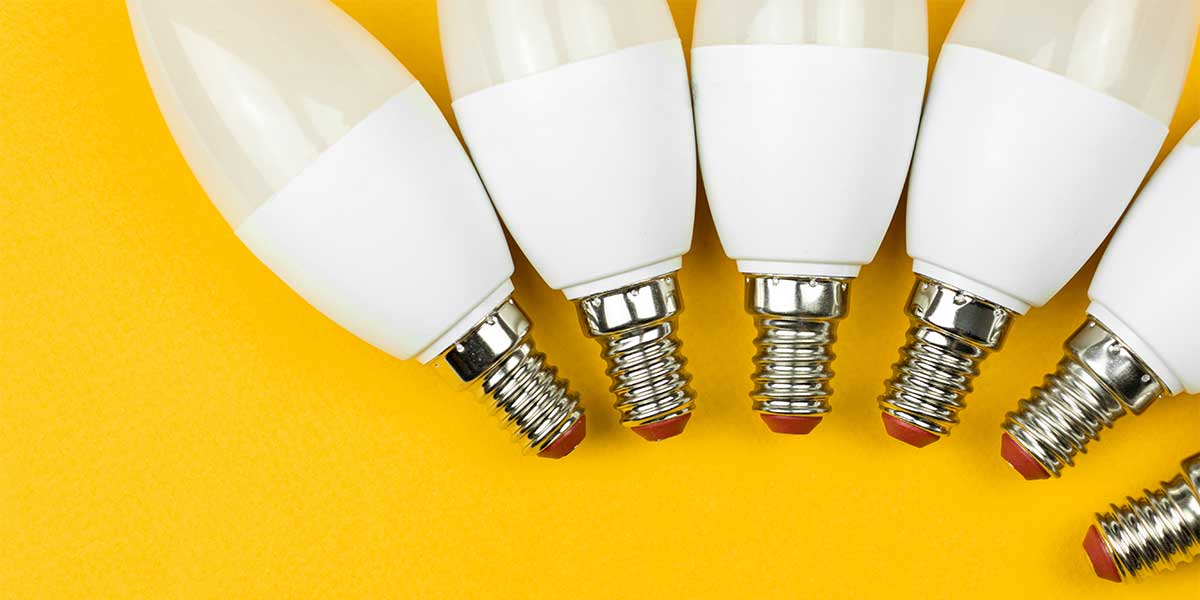Navigating the world of home lighting isn’t just about flipping a switch, it’s about making smart choices that balance energy efficiency, cost, and comfort. For years, homeowners stuck with incandescent bulbs, only to watch them waste energy and burn out faster than a birthday candle. Thankfully, two major players have stepped in to change the game: LED (Light Emitting Diode) bulbs and CFL (Compact Fluorescent Lamp) bulbs.
At Expert Electric, we know that choosing the right bulb can feel overwhelming. Both LED and CFL bulbs promise efficiency and savings compared to old-school incandescent, but which option really shines the brightest? In this in-depth guide, we’ll compare LED bulbs vs CFL bulbs, highlighting the pros, cons, costs, and best applications for each, so you can make a well-informed decision for your home’s lighting needs.
Why Lighting Choices Matter
Lighting does more than just brighten a room. The type of bulb you choose directly affects:
- Your electricity bill (energy efficiency is key here).
- Your comfort (brightness, color temperature, and instant vs delayed lighting).
- Your health (some lights mimic natural daylight better, which can impact mood).
- The environment (lifespan and materials affect sustainability).
By comparing LED bulbs vs CFL bulbs, you’ll see why this decision can make a noticeable difference for your household in both the short and long term.
What Are LED Bulbs?
LED bulbs represent one of the biggest advancements in lighting technology. Instead of heating a filament (like incandescent) or exciting gas (like CFLs), LEDs use semiconductors to create light when electricity flows through them. This makes them incredibly efficient.
Key Features of LED Bulbs:
-
Energy Efficiency: LEDs consume about 75–80% less energy than incandescent bulbs and up to 20–30% less than CFL bulbs.
-
Durability: They are resistant to shock, vibrations, and temperature fluctuations.
-
Variety: Available in a wide range of brightness levels, color temperatures, and even smart lighting features.
-
Instant On: No waiting period, full brightness the moment you flip the switch.
LED bulbs also maintain a traditional bulb shape while using non-transparent or frosted designs to diffuse light evenly. This makes them versatile for virtually any room in your home.
What Are CFL Bulbs?
CFL bulbs were once the go-to alternative to inefficient incandescent bulbs. These bulbs work by passing an electrical current through a gas-filled tube coated with phosphor. The reaction creates ultraviolet light, which the coating then converts into visible light.
Key Features of CFL Bulbs:
-
Energy Efficiency: CFLs use about 70% less energy than incandescent bulbs, though slightly more than LEDs.
-
Affordability: CFLs are typically cheaper upfront than LEDs.
-
Design: Recognizable by their spiral “curly” design or tube-based forms.
-
Lifespan: Around 8,000–10,000 hours—better than incandescent bulbs but shorter than LEDs.
The downside? CFLs take a few seconds to reach full brightness and contain small amounts of mercury, which requires special disposal.

LED Bulbs vs CFL Bulbs: A Side-by-Side Comparison
1. Energy Consumption
-
CFL Bulbs: Use about 20–33% of the electricity of an incandescent bulb.
-
LED Bulbs: Take efficiency further, using just 10–20% of the energy that an incandescent needs.
Winner: LED bulbs, the ultimate energy saver.
2. Lifespan
-
CFL Bulbs: Last up to 10,000 hours (about a year if used heavily).
-
LED Bulbs: Last 25,000+ hours, around 2.5 times longer than CFLs and 25 times longer than incandescent.
Winner: LED bulbs, by a long shot.
3. Light Quality
-
CFL Bulbs: Sometimes give off a harsh, artificial light that doesn’t always feel comfortable indoors.
-
LED Bulbs: Provide a wide range of tones, from warm, cozy yellows to crisp daylight, closely mimicking natural sunlight.
Winner: LED bulbs, especially for mood and comfort.
4. Warm-Up Time
-
CFL Bulbs: Require a few seconds to “warm up” before reaching full brightness.
-
LED Bulbs: Instant illumination, no waiting, just light.
Winner: LED bulbs again.
5. Environmental Impact
-
CFL Bulbs: Contain mercury, which makes disposal tricky and potentially hazardous.
-
LED Bulbs: Mercury-free, lower carbon footprint, and reduced waste due to their long lifespan.
Winner: LED bulbs, safer for your home and the planet.
6. Cost
-
CFL Bulbs: Cheaper upfront but cost more in the long run because they don’t last as long and use more energy.
-
LED Bulbs: Higher upfront price but save more over time thanks to lower energy bills and fewer replacements.
Winner: LED bulbs for long-term value.
According to Eco Friendly Habits, an LED bulb can cost as little as $34 over 20 years, compared to $54 for CFLs and $211 for incandescent bulbs. This stark difference underscores why LEDs are an even more eco-friendly and cost-effective choice for homeowners. The reduced energy consumption of LED bulbs not only leads to lower utility bills but also contributes to a decrease in carbon footprint, aligning with global efforts towards sustainability.
While both bulb types offer substantial energy savings, LEDs stand out as the superior choice regarding efficiency, longevity, and environmental impact, offering a compelling option for those looking to optimize their energy usage and reduce their ecological impact.
The Bottom Line: LED Bulbs vs CFL Bulbs
When it comes to the showdown of LED bulbs vs CFL bulbs, LEDs emerge as the clear winner in nearly every category: efficiency, lifespan, quality of light, and eco-friendliness. While CFLs were a great stepping stone away from incandescent lighting, they’re slowly being phased out as LEDs become the dominant choice for homeowners and businesses alike.
If you’re looking for comfort, savings, and sustainability, LED bulbs are the smart investment.
FAQs About LED Bulbs vs CFL Bulbs
1. Are LED bulbs more expensive than CFL bulbs?
Yes, the upfront cost of LED bulbs is typically higher. However, their extended lifespan and energy savings more than offset the initial investment. Over time, LEDs are the more cost-effective option.
2. Do CFL bulbs still make sense to buy?
CFLs are still sold and can be useful in low-cost, short-term applications. But if you’re thinking long-term, LEDs are the better choice for energy savings and reduced maintenance.
3. Are LEDs safe for the environment?
Absolutely. LEDs contain no mercury, use less energy, and last longer—meaning fewer bulbs end up in landfills compared to CFLs.
4. Which type of bulb is better for outdoor lighting?
LED bulbs perform better in outdoor and cold-weather conditions because they turn on instantly and resist temperature fluctuations. CFLs can be less reliable in colder climates.
5. Do LED bulbs work with dimmer switches?
Yes, many LED bulbs are dimmable, but make sure to check the packaging. Not all LEDs are compatible with every dimmer switch, so pairing them correctly is essential.
Final Thought
The debate of LED bulbs vs CFL bulbs may seem complex, but the choice is actually simple: LEDs outperform CFLs in nearly every category. From their energy efficiency to their eco-friendliness and comfort, LEDs represent the future of home lighting.
At Expert Electric, we don’t just help you install the right lighting, we guide you toward smarter energy choices that make your home safer, greener, and more cost-effective. Whether you’re considering a lighting upgrade or a complete electrical renovation, our team of licensed electricians is here to help.
Contact Expert Electric
Ready to brighten your home with smarter, more efficient lighting solutions? Connect with us today:
-
Phone: 604-681-8338
-
Email: info@expertelectric.ca
Let’s create something powerful together, because your home deserves the best.


